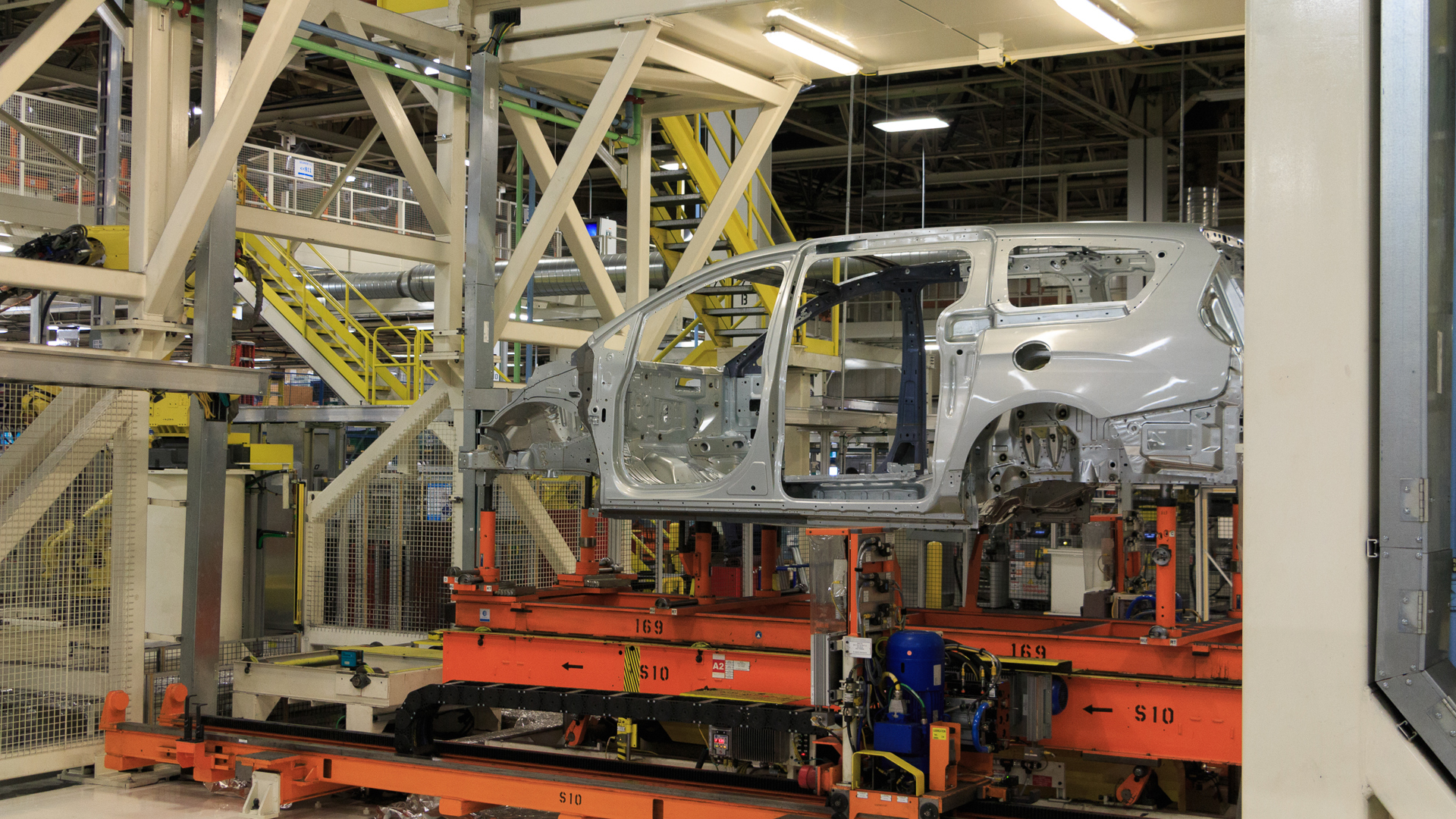Ten million minivans. That’s 70 million seats, 150 million cup holders, approximately 800 million spilt Cheerios, and billions of trips to hockey practice. That’s what has rolled out of the Windsor Assembly Plant in the last 30 years. They’ve had badges from Chrysler, Plymouth, Dodge, even Lancia and Volkswagen. And here’s the history of their home, and how they’re made.
When Walter P. Chrysler took ownership of Dodge Brothers, Inc., he knew that it made more sense to move Canadian Dodge production closer to the factories that built Chrysler’s other cars. So in 1929, ground was broken in a former cornfield on the south side of Tecumseh Road in Windsor, Ontario.
That patch of Windsor farmland was churning out Plymouth, Dodge Brothers, DeSoto, and Chrysler cars within the year. The original 28-hectare site is now 129 hectares, with over 418,000 square metres of production space.

Until 1965, the plant built nearly every model under the Chrysler umbrella. That year, the new Auto Pact between the US and Canadian governments reduced taxes on vehicles moving between the two countries. From then on, it made more sense – for both quality and profits – to make just a few vehicles at each plant. Since then, the Windsor Assembly plant has built Valiants and Darts, Cordobas and late ’70s Chargers, Diplomats and New Yorkers.
But since 1983, Windsor Assembly has built minivans. More than 10 million of them. It started with the original Magic Wagons, and has evolved to the newest Chrysler Pacifica. The newest vans can be optioned with more TV screens than the originals had cup holders. They’ve progressed from a 2.2L four-cylinder with a three-speed automatic (or an optional manual!), 96 hp, a two-barrel carb, and 12.4 L/100 km combined, to a 3.6L V6 that has nine-speeds in the gearbox, 287 hp, and 10.9 L/100 km combined. There’s even a plug-in hybrid model that can do 53 km on battery power alone.

Chrysler’s minivans have come a long way in the last 34 years. The plant that builds them has come even further in nearly 90. So here’s a look at the house that Chrysler built. And the minivans that keep the assembly line rolling.
It takes 26.1 hours from the time a handful of bare metal stampings get carted into the body shop until a finished Pacifica or Grand Caravan rolls out the door of the plant. The steps in between take over 6,000 employees, nearly 40 km of conveyor belts, and 861 trucks full of parts every day.

The first step is the body shop. That’s where all of the big pieces of steel – that have been bent, cut, and twisted into the shape of the parts of a van – get welded together. Robots use lasers and cameras to locate all parts to within 0.5 mm before welding them together. Most of these panels come pre-formed, but the plant actually stamps some components in-house. Turning a pile of steel pieces into a completed body in white takes 8.5 hours.
After that rush, it’s a long wait. The van body will sit for a little over an hour. The wait is to let the other departments organize the parts that each van will need, and make sure they’re at the right spot in the line.

Next up is paint, where each van spends seven hours getting dipped in primers before getting sprayed with paint and clearcoat. Each vehicle is painted with the doors in place, but after that, the doors are removed and take a separate journey around the plant. That makes it a challenge to make sure the doors find the right van, but the process ensures a better paint match for each vehicle.
Then it’s trim and chassis. That’s where most of the other pieces of the van come together. Wiring harnesses, the seats, and the glass are all installed here. The powertrain is combined with the suspension into one big unit. Even the exhaust is already attached. At the right step in the process, the van comes down and the powertrain goes up, and the two are joined. Robots ensure that everything is properly torqued. Wires, lines, and hoses are all fastened together.

The all-new Pacifica Hybrid posed a challenge for assembly. Even though the plant has built gas -engine, diesel-engine, and even right-hand-drive vans over the years, a hybrid system offers unique challenges. Since the line is built around processes that take just 42 seconds or less to complete, putting the hybrid components together has to be handled separately. But once it’s together, the hybrid powertrain and battery are mated to the body in the same process as a regular van.
Then it’s time for the final steps. Each van gets a very thorough inspection. They are looked over by a team of people making sure that everything is right. That’s after dimensions have been checked numerous times throughout the whole process. Once that inspection is done, it’s time for a bath. Each van is drenched under a high-volume water spray for several minutes to make sure that there are no leaks.

Once that’s done, it’s time to load a completed van for shipping to a dealer, then delivery to the customer.
Windsor Assembly has come a long way since the 1920s. Some of the original building is still there, but it’s nearly unrecognizable. The entire plant got $1.2 billion in upgrades with the launch of the Pacifica, and it shows. This isn’t the dirty and dark factory you’re expecting. It’s nearly spotless, brightly painted, and well lit. There are more robots than ever before, but they also added 1,200 people. You can sense that the people we met and passed were happy to be there, and took pride in what they were doing.












